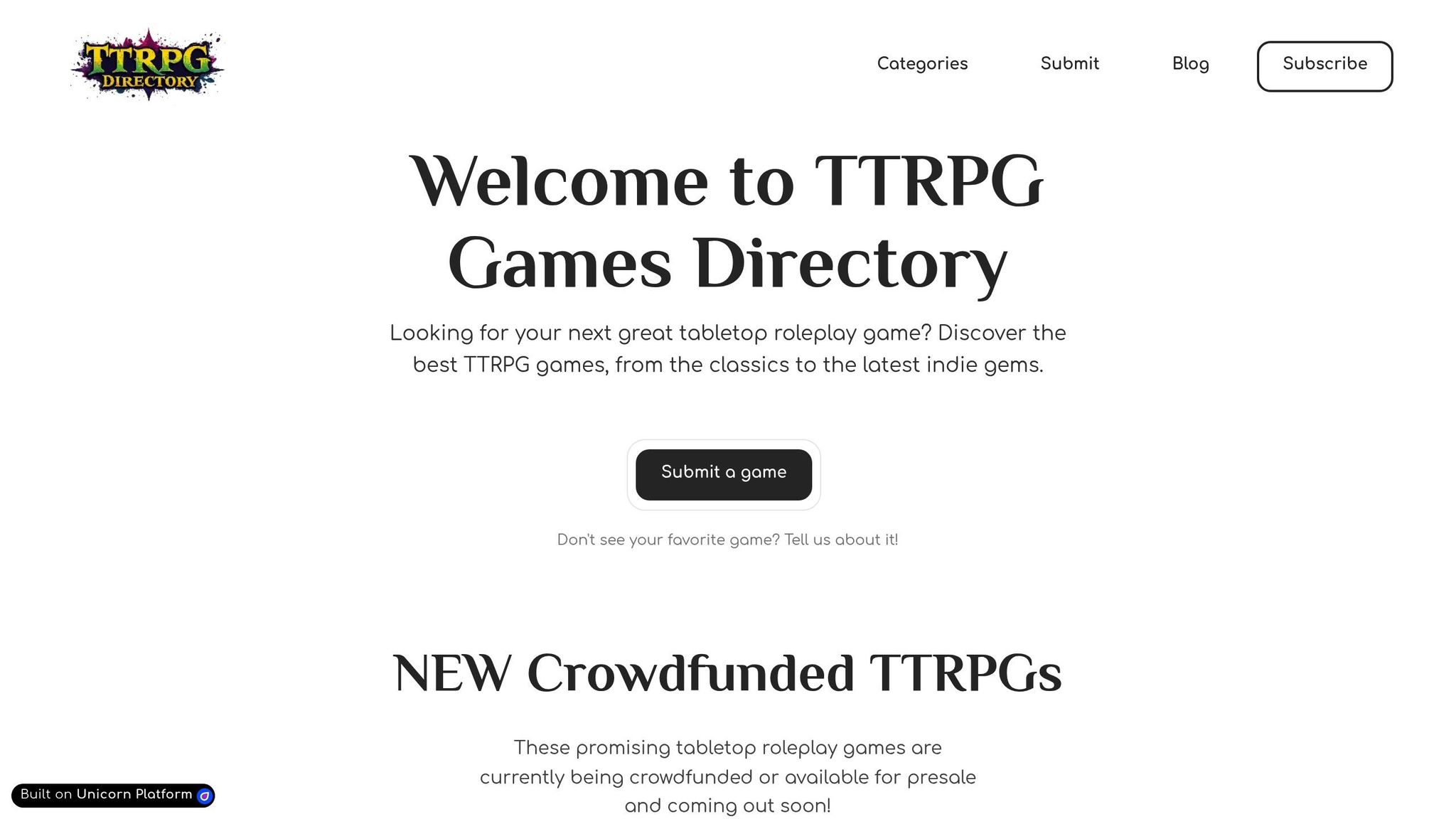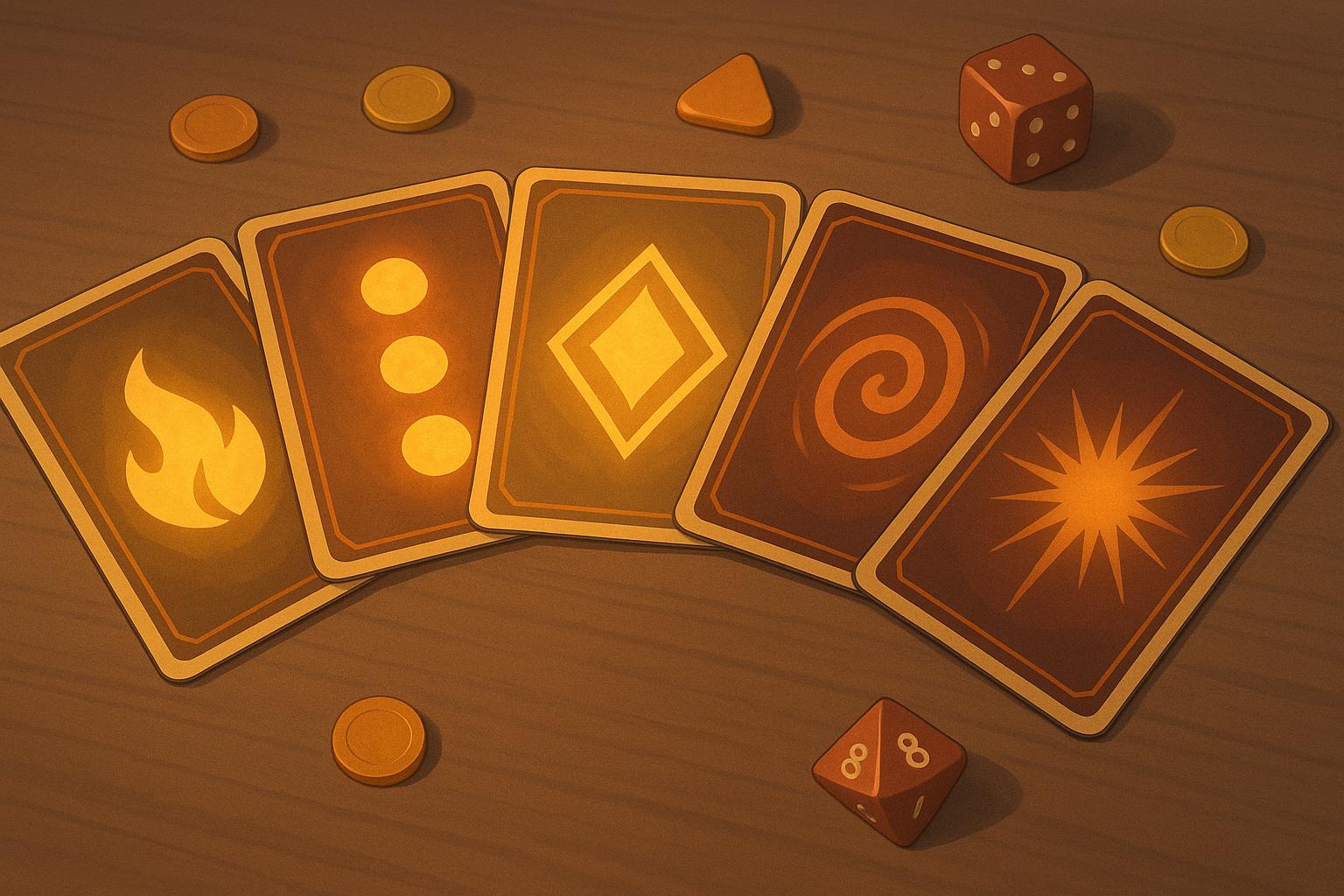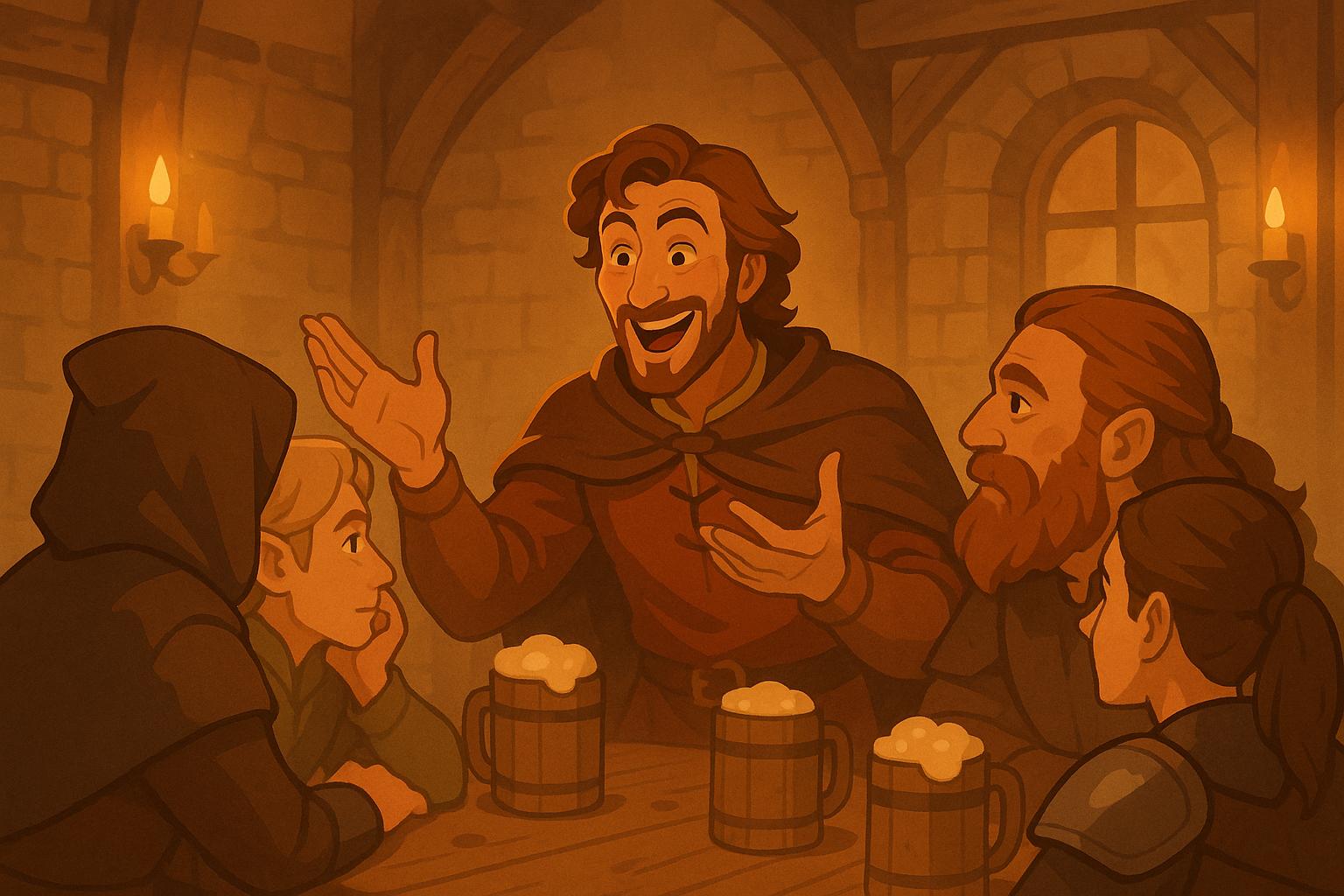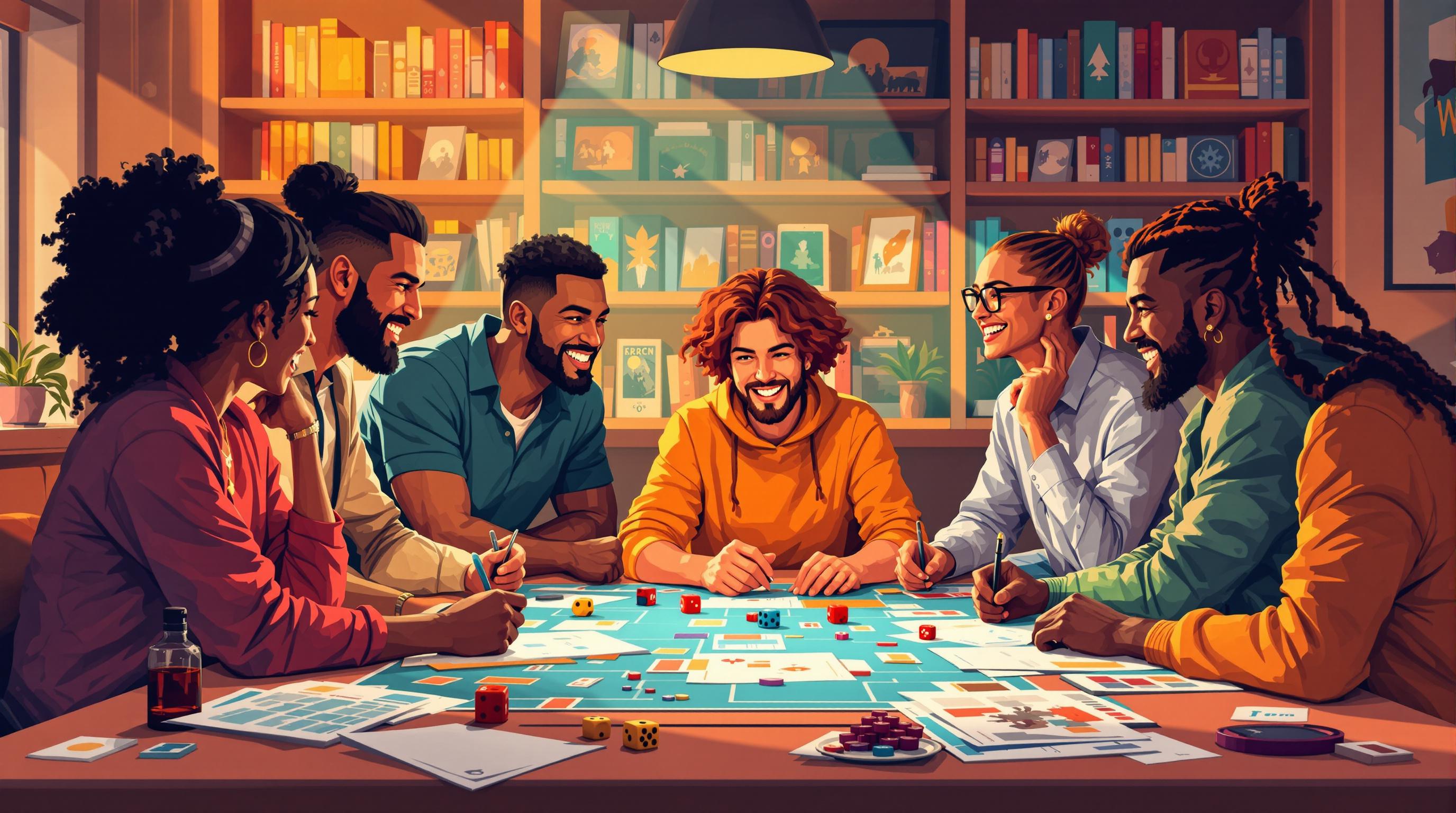Minimalist RPGs focus on simplifying mechanics to let storytelling take center stage. These games reduce complex rules, making them easier to play and more accessible, especially for newcomers. By prioritizing player imagination and collaboration, they create dynamic, story-driven experiences where decisions matter more than dice rolls. Here's why they're gaining traction:
- Simplicity: Fewer rules mean faster gameplay and less time spent referencing rulebooks.
- Accessibility: Minimalist systems lower the barrier to entry for new players.
- Story-First: Mechanics support narrative flow, keeping the focus on characters and plot.
- Player Agency: Players have more control over the story, fostering deeper engagement.
Popular examples like Cairn and 24XX illustrate how streamlined systems can deliver rich, engaging narratives without the complexity of traditional RPGs. These games are reshaping tabletop gaming by putting storytelling at the forefront.
FU Game Design with Nathan Russell from Peril Planet Games

How Minimalist RPG Mechanics Support Storytelling
Minimalist RPG mechanics strip away unnecessary complexity, creating a space where the story takes center stage. By simplifying the rules, these games allow players to immerse themselves more deeply in the narrative without constant interruptions. The focus is on removing anything that might distract from the story, paving the way for richer character interactions and seamless storytelling. Let’s dive into how these pared-down mechanics enhance narrative flow.
Simple Rules and Narrative Flow
One of the defining strengths of minimalist RPGs is their ability to streamline gameplay through simplicity. Many of these games condense their entire rule system onto a single page. This eliminates the need for players to constantly flip through hefty rulebooks, which can disrupt the flow of the game. It’s built on a simple idea: fewer rules mean fewer distractions, keeping everyone immersed in the story.
"A key aspect of design is to minimize, or ideally eliminate the friction. Every single rule and 'don't forget' adds cognitive load for both players and GMs." - Kaelwyr
This approach becomes especially effective during pivotal moments like combat or conflict resolution. Traditional RPGs often slow the pace with intricate calculations, multiple dice rolls, and rule-checking. Minimalist systems, on the other hand, prioritize quick and decisive outcomes, allowing the drama to unfold naturally.
By reducing or entirely removing bonus calculations, these games shift the focus back to the characters' actions and decisions rather than the mechanics behind them. This means more time spent on storytelling and less on crunching numbers. Conflict resolution becomes smoother, and players stay engaged, keeping the narrative momentum alive. The beauty of these mechanics lies in their ability to integrate seamlessly with the story, enhancing the overall experience.
Connecting Story and Mechanics
Minimalist RPGs don’t just simplify mechanics - they ensure that every rule actively supports storytelling. Instead of treating rules as separate from the narrative, these games weave mechanics into the story itself, making them a natural part of the experience.
In these systems, every mechanical element serves a clear narrative purpose. Dice rolls, for example, aren’t just about success or failure; they introduce complications, reveal character depth, and push the plot forward. Mechanics become tools for storytelling, adding layers to the narrative rather than distracting from it.
This approach also streamlines gameplay for everyone involved. Game masters spend less time managing intricate systems and more time responding to player choices, creating a dynamic and responsive story environment. Players, in turn, make decisions based on their characters and the unfolding plot rather than obsessing over rule optimizations.
The result is a feedback loop where the story influences the mechanics, and the mechanics amplify the story. Imagine a player describing their character’s desperate attempt to save a friend. The mechanics reinforce the emotional weight of that moment, delivering a resolution that feels impactful without bogging it down in calculations. This keeps the focus on imagination and collaboration, allowing the story to shine.
Moreover, minimalist mechanics open doors for character growth beyond just stats. While some critics argue that rules-light systems can struggle with character advancement because even small statistical improvements feel too significant, many players and designers argue that growth through the story itself is far more meaningful. Characters evolve through their experiences, relationships, and arcs, not just by stacking bonuses. This makes for a more organic and emotionally resonant journey.
How Minimalist RPGs Encourage Player Input and Control
When rules take a backseat, players step forward as storytellers. Minimalist RPGs create space for creativity, turning participants into co-authors of the narrative rather than mere followers of predefined mechanics. This shift fundamentally changes how tabletop gaming unfolds, handing the reins of story creation directly to the players. The result? More input, deeper engagement, and a richer storytelling experience.
Fewer Rules, More Player Input
The beauty of minimalist RPGs lies in their simplicity. By stripping away layers of intricate rules, these games give players the freedom to focus on their characters and the story. Without the constant need to reference rulebooks or calculate modifiers, players can channel their energy into imagining what their characters would naturally do in any situation.
This approach emphasizes creativity and player-driven decisions over rigid mechanics, fostering a deeper connection to the game. Instead of getting bogged down in rules, players make choices that feel authentic, opening doors to possibilities that more structured systems might close.
"Player agency is more than just a game mechanic in tabletop RPGs - it's the soul of the game. It breathes life into characters, adds depth to the narrative, and creates a vibrant, living world that responds to the players' actions."
- Christian Amauger, Senior Front-end Developer - Digital Strategist - Game Designer - Roleplayer
Without rigid rules, players are free to improvise and shape the story in real-time. This freedom reframes the way players approach tabletop RPGs, encouraging them to think less like operators of a mechanical system and more like co-authors of a shared narrative. Every decision, creative solution, and character interaction becomes a piece of the larger story puzzle, making the experience more collaborative and dynamic.
When players see their ideas directly influencing the game, it creates a sense of ownership and authenticity, making every moment feel meaningful.
Player Control and Story Depth
With greater creative freedom comes a deeper, more immersive story. Minimalist RPGs hand players significant narrative control, allowing them to shape the world and their characters' journeys. This level of control strengthens immersion and emotional investment, as players know their choices genuinely impact the unfolding plot.
This freedom allows players to vividly describe their actions, pursue character-driven goals, and make decisions that feel true to the story rather than optimized for mechanics. The result is a narrative that feels organic and personal.
However, this freedom comes with its challenges. Game masters (GMs) must carefully balance the players' autonomy with the need for a cohesive narrative. It’s a delicate dance - embracing player creativity while ensuring the story stays engaging.
"In RPGs, the harmony between player autonomy and a cohesive narrative is a fine line that Game Masters walk with trepidation."
- Christian Amauger, Senior Front-end Developer - Digital Strategist - Game Designer - Roleplayer
To manage this balance, minimalist RPGs often rely on collaborative storytelling techniques. Methods like "Yes, and..." or "Yes, but..." allow GMs to incorporate player input while keeping the narrative on track. This approach validates player ideas while ensuring the story doesn't lose its focus.
By keeping the mechanics simple and the story flexible, these games ensure that every player decision carries weight. The system adapts to unexpected twists, encouraging deeper investment and sparking even more creative contributions.
The true magic lies in finding the sweet spot where player choices drive the story forward while maintaining a cohesive and engaging narrative. Minimalist RPGs transform gaming sessions into collaborative storytelling adventures, where everyone at the table has a hand in shaping the final outcome. This shared creative journey is what makes these games so compelling.
sbb-itb-b8b00a5
Case Studies: Examples of Minimalist RPGs
Looking at actual games shows how simplifying mechanics can enhance storytelling by drawing players deeper into the narrative. After discussing minimalist mechanics, let’s explore some real-world examples that highlight their storytelling power.
Popular Minimalist RPGs
Cairn is a standout in minimalist RPG design, emphasizing smooth narrative flow. Set in a dark, mysterious forest, this game uses a d20 roll-under system built around just three ability scores. It’s easy to jump in with random, classless character creation and a rules overview that takes only 20 minutes. Instead of relying on complex stats, characters are defined by their items and inventory, which naturally evolve over time without penalties. Even combat keeps things simple - there’s no "roll to hit", just damage rolls, which keeps the action moving and the tension high.
"Cairn is a system that melds together some of the best elements from two popular post-OSR systems, Into the Odd and Knave." - OffendedDefender
24XX, on the other hand, uses a modular approach to minimalist storytelling. Each game in the 24XX series is a compact, self-contained toolkit spanning just three pages plus a cover. The rules are quick to explain, yet the system’s true strength lies in its adaptability. Its dice-chain mechanic allows for extensive customization while maintaining narrative flow. What’s particularly impressive is how 24XX has been tailored to countless settings and genres - from science fiction to fantasy and horror - without requiring players to learn entirely new systems.
The simplicity of these systems isn’t just a coincidence. As one designer puts it:
"Strafing away from complex game mechanics has indeed seen success. With only a few things to remember and fully utilizing the tools given to you, accompanied by dynamic storytelling that involves people in the process rather than merely explaining concepts to them." - Kaelwyr
These examples show how minimalist designs shift the focus away from rulebooks and onto what really matters: character decisions, creative problem-solving, and collaborative storytelling.
Comparison Table: Narrative Features and Simplicity
Here’s a quick look at how different minimalist RPGs balance simplicity with storytelling:
| Game | Character Creation Time | Core Mechanics | Narrative Focus | Key Storytelling Feature |
|---|---|---|---|---|
| Cairn | 20 minutes | d20 roll-under, 3 ability scores | Exploration & mystery | Inventory-driven characters that evolve naturally |
| 24XX | Minutes | Player-facing dice, degrees of success | Genre flexibility | Modular 3-page toolkit adaptable to any setting |
| Into the Odd | 10–15 minutes | d20 system, no skills | Character-driven adventure | Minimal prep, immediate play |
| Knave | 15 minutes | d20 roll-under | Old-school exploration | Classless system emphasizing player choice |
These systems share a common philosophy: streamlined character creation and flexible rules that prioritize storytelling over rigid mechanics. By deliberately avoiding rules for every scenario, they leave space for creativity and improvisation, enabling game masters to guide the narrative seamlessly.
For more information, the TTRPG Games Directory offers detailed descriptions of minimalist RPG systems. Whether you’re looking for a game that matches your narrative style or just want to explore storytelling-focused options, it’s a great resource to check out.
Addressing Challenges in Minimalist RPG Design
Minimalist RPGs excel at enhancing storytelling, but they also come with their own set of challenges. To create games that truly benefit from simplicity, it's crucial to identify these pitfalls and apply thoughtful solutions.
Common Problems in Minimalist Design
One of the biggest risks in minimalist RPGs is oversimplification. Stripping away too many rules can leave players feeling lost, unsure of how to make decisions or move the story forward, which can lead to confusion.
Another issue is that minimalist systems often lack the tools to inspire narrative ideas, particularly in early stages when the story is still forming.
Balancing mechanics with narrative depth is a tricky tightrope to walk. Too few rules can lead to shallow gameplay, while overly complex mechanics can pull players out of the story. Game designer Kaelwyr suggests a practical approach:
"It's thus a good practice to replace complex combat systems with quick and decisive outcomes."
Additionally, minimalist systems often assume that game masters (GMs) are skilled improvisers. Without strong GM tools, even experienced storytellers can struggle to maintain a smooth and engaging experience.
Best Practices for Story-Rich Minimalist Design
Crafting a successful minimalist RPG isn't just about cutting rules - it’s about making intentional design choices. As Kaelwyr puts it:
"Designing a minimalistic game is not as straightforward as eliminating rules; it is an art form that demands precision, intentionality, and a deep understanding of what players truly need to play and enjoy the game."
Here are some strategies to address the challenges of minimalist design:
- Iterative playtesting is invaluable for spotting gaps in structure or guidance. Testing helps identify moments where players hesitate or seem confused, signaling areas that need refinement.
- Guided choices can keep players engaged while reducing decision fatigue. Instead of overwhelming players with endless options, random number generation can introduce an element of chance, steering players toward meaningful choices that drive the story forward.
- Predefined narrative guidelines provide just enough structure to spark creativity without bogging players down in rigid plotlines. These frameworks help players generate ideas and focus on exploration and discovery.
David Kuelz emphasizes the emotional core of storytelling in games:
"The goal is to make the gameplay not just fun, but emotionally compelling. Games are fun in and of themselves, and so are stories, but the goal of combining them together is to get the player to feel something about what they're doing."
Other techniques include:
- Environmental storytelling, where every element - writing, mechanics, visuals, even enemy design - contributes to the narrative. Mechanics should reflect the consequences of player actions, making choices feel impactful.
- Flexible narrative structures that provide clear arcs (beginnings, middles, and ends) while remaining open to unexpected player decisions. This ensures that choices carry weight and lead to meaningful outcomes.
These strategies not only improve gameplay but also reinforce the narrative-driven focus that defines minimalist RPGs.
Using TTRPG Games Directory as a Resource

To dive deeper into minimalist RPG design, the TTRPG Games Directory is a valuable resource. This database is a treasure trove of information on game mechanics, themes, and features, helping both designers and players navigate the minimalist RPG world.
For designers, the directory offers examples of how various games handle key elements like character development, world-building, and player agency. These examples provide actionable insights into effective design choices. For players and game masters, it’s a great tool to find systems that align with their style and prioritize immersive storytelling.
Conclusion: The Storytelling Power of Minimalist RPGs
Minimalist RPGs mark a refreshing approach to tabletop storytelling by shifting the focus away from intricate mechanics and toward player-driven narratives. By simplifying the rules and emphasizing creativity, these games open the door to storytelling possibilities that more complex systems often struggle to achieve.
What sets minimalist RPGs apart is their ability to put players at the heart of the story. When the focus shifts from crunching numbers to crafting narratives, players feel more invested in the game. This approach fosters creativity and encourages a level of engagement that turns a simple gaming session into an unforgettable shared experience. The streamlined mechanics also allow the story to flow naturally, creating moments that resonate emotionally with everyone at the table.
At their core, minimalist RPGs embrace the idea that storytelling isn't about perfection - it's about participation. The joy lies in the process of weaving a narrative together, not in delivering a polished end product. These games celebrate the act of storytelling itself, valuing the shared journey of imagination and collaboration.
For those curious about diving into this narrative-first style of gaming, the TTRPG Games Directory is an invaluable resource. It offers detailed descriptions of various minimalist systems, highlighting their mechanics, themes, and unique features. Whether you're drawn to character-focused tales or expansive world-building, the directory makes it easy to find a game that matches your storytelling style.
As tabletop gaming evolves, it's clear that systems prioritizing player creativity and narrative depth are carving out a special place. Minimalist RPGs don’t just make storytelling easier - they redefine it, turning every session into a collaborative, player-driven adventure where imagination takes the lead.
FAQs
How do minimalist RPGs enhance storytelling compared to traditional RPGs?
Minimalist RPGs shine by putting the spotlight on storytelling and player creativity, creating a space where collaborative narratives take center stage. With streamlined rules and mechanics, players enjoy the freedom to steer the story and dive into unique character journeys without being bogged down by complex systems.
On the other hand, traditional RPGs lean on structured frameworks like combat, exploration, and social interaction. While these systems provide clarity and structure, they can sometimes restrict narrative flexibility. Minimalist RPGs flip the script by emphasizing player agency and improvisation, fostering deeper engagement and delivering stories that feel more personal and immersive.
How can game masters balance player freedom with a cohesive story in minimalist RPGs?
Game masters can find the sweet spot between player freedom and a well-structured story in minimalist RPGs by employing a few thoughtful techniques.
Start by offering subtle nudges - use meaningful hints or rewards to guide players in a way that feels organic rather than controlling. This keeps the narrative moving while still giving players the freedom to explore.
Next, adjust the story in real-time based on the players’ decisions. Collaborative storytelling not only makes players feel like their choices have weight but also helps the game master maintain the overall direction of the plot.
Lastly, make sure the game mechanics and the story work hand in hand. When the mechanics naturally support the narrative, the experience feels more immersive and fluid. By blending these strategies, game masters can inspire creativity and give players plenty of agency, all while keeping the story intact.
How do minimalist RPGs support deep character development without relying on complex rules?
Minimalist RPGs stand out by putting storytelling, creativity, and player-driven decisions at the forefront, rather than burying players in complex rules. These games strip down mechanics to their essentials, focusing on a few core traits or features that naturally evolve as the story unfolds. This simplicity gives players the freedom to craft characters that feel personal and layered.
With fewer rules to manage, players can dive deeper into their characters' motivations, relationships, and personal growth through roleplaying and collaborative storytelling. The result? A streamlined experience that leaves more room for meaningful, immersive character arcs.


